INDO
How has this Chicago design duo made its name during a down economy? It does windows and does them very well.
Linsey Burritt and Crystal Grover aren’t the types that need to be the center of attention. They let their stunning, sculptural window installations do the talking. Their company, INDO, run from a charming studio space in Chicago’s West Loop neighborhood, creates intricate window displays that are inclined to make passersby stop and wonder. The ingenuity goes deeper—every design is made from recycled materials the women source themselves.
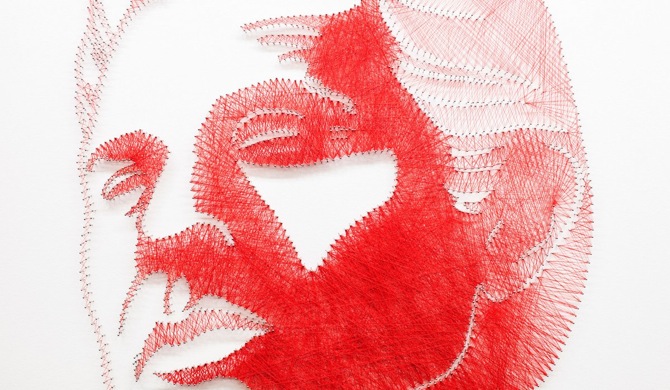 Ogilvy, Chicago
Ogilvy, Chicago
The pair met as college students in 2007, became fast friends and have been working together ever since. Chicago’s business press took note of their thriving (in a recession) business in 2010. As inquiries began rolling in, the two coined the name INDO, moved into a workshop, and began pursuing their creative endeavors full-time.
Their collaboration has resulted in an impressive body of work that is just as focused as it is imaginative. Like us, you might find it refreshing to see sustainability and local artistry embraced in major retail spaces. Nothing Major chatted with Linsey and Crystal about their history, what inspires them, and the importance of working with the right materials.

How did the two of you meet and decide to start working together?
Crystal: We met at a coffee shop when we were in Chicago when we were both still in college. We stayed close after that and now it seems like we’ve been friends for a long time. INDO started after we worked on a few projects together. We noticed City Soles/Niche had changing window displays and we asked if we could put a proposal together. We were so scared to send the pitch in, we never did any creative work like that on our own. Luckily we met them at a point when they were ready to work with one team on an on-going basis. We got the job and were able to work with them on several different displays.
Then work just trickled in here and there. When our friends Sharon and Ted of Strand Design, asked us to share a studio space, we knew it would help bring more work in and legitimize our practice. And then, eventually, INDO came to be.
Linsey: There was this moment in 2010 when Crain's Business wrote a piece about us. We said “We can’t be in Crain’s and not be a real business!” It seemed time to establish ourselves.
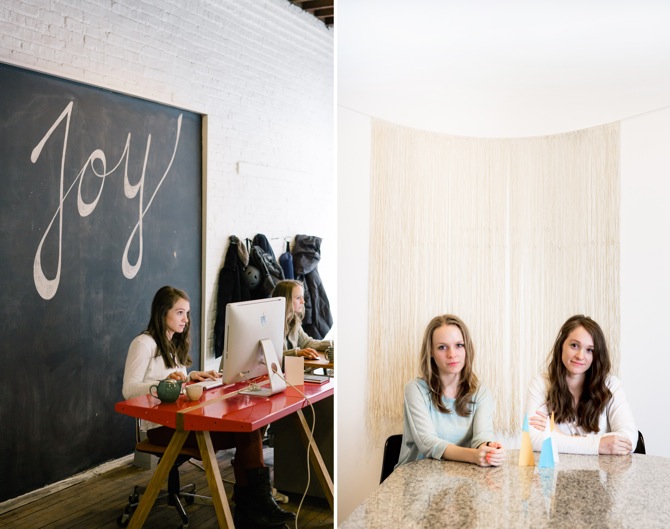
When did you realize your artwork was also a business opportunity?
L: We started this business during the recession and we were still getting work. Retailers understand that good window displays draw people in.
C: At first I don’t think we were really trying to sell this idea, we never thought about it as a business opportunity—we were just aware that people were responding to what we were putting out there. People's responses equaled the business opportunity.
What's your process for finding the materials?
L: People donate things, we get cold calls—sometimes from people we've never met saying “Oh I have this item are you interested?” So, it's gotten a bit easier than when we first started. Rather than going through the dumpster or the Post Family's recycling room.
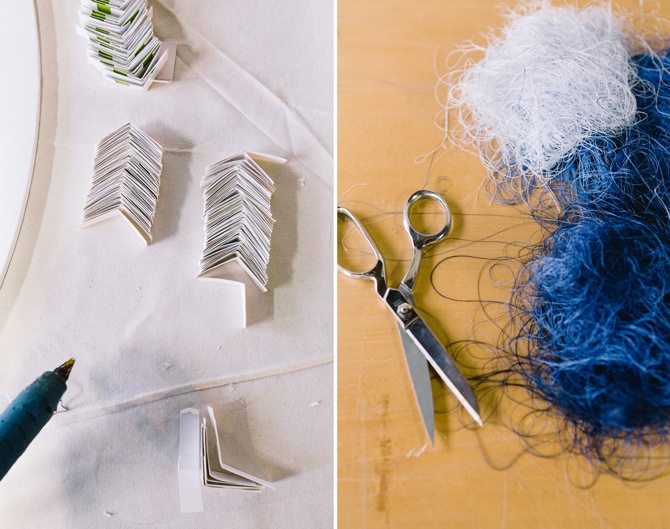
What's the strangest placed you've found materials?
L: The ongoing theme is that they're all strange.
C: The interesting thing about some of the places we go is that they're secret and don't want anyone else to know about them. We got sent to this gross building, with dripping ceilings and stray cats, but with beautiful, expensive rugs. The rugs were soaked because the ceilings were caved in. Random metal pieces were thrown all across the space. We didn't go back there.
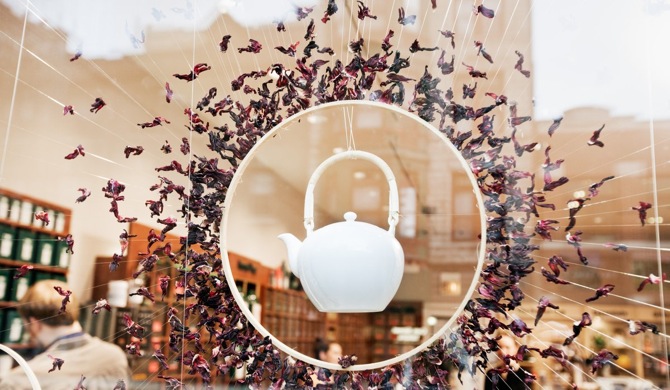 TeaGschwendner display of expired Hibiscus
TeaGschwendner display of expired Hibiscus
What's your dream project?
L: Every project we get is really exciting. It's always different. We've talked a lot about ideas that would be self-funded. That would be a dream–to realize those.
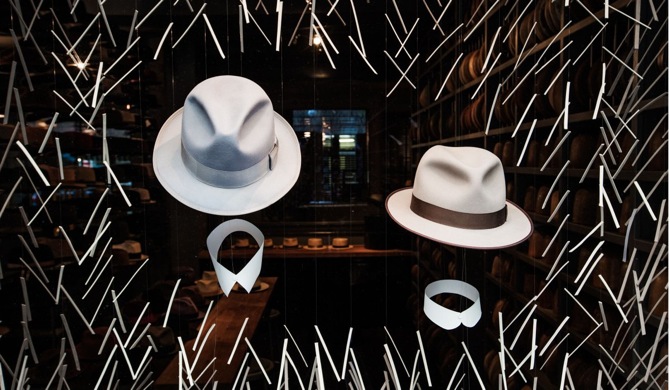
Optimo
Favorite project?
C: It depends on the day. Some of our favorites are the Ogilvy building, the tea sunburst and the window in Unison.
Eventually we would love to have standard designs that are easier to reproduce. People could say, “I want this design in my window.” Which would cut out the creative development and make our work more affordable and accessible. Currently, when a client comes to us, there are so many conversations that have to happen before we can establish what we can actually make.
What inspires you?
C: Our clients are really inspiring. They really connect with what we're doing. And it’s exciting when they become really invested in the process. We’ve created really great relationships and each relationship on each project becomes really important and influential. It drives us when we feel that energy.
The conversation about sustainability is something we really try to drive and what we really want to emphasize. We have to figure out the best way to talk to people about it without being pushy.
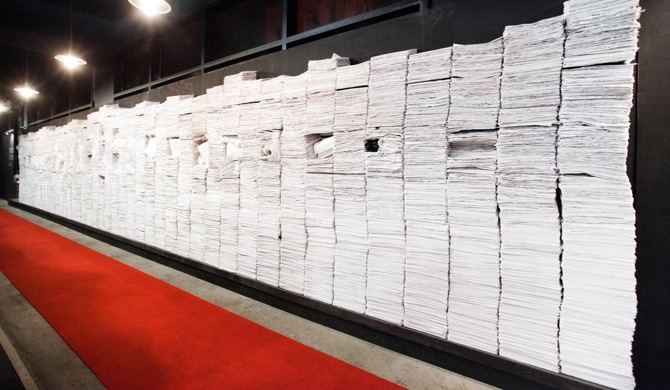 Steppenwolf Theatre Company
Steppenwolf Theatre Company
Are any of your structural designs inspired by the architecture of the city?
L: We love that this neighborhood is still an authentic meatpacking district and how it feels like a small neighborhood.
C: This is a great neighborhood for us. It's nice to ride my bike in the morning and see all the hustle and bustle—everybody busy at work. When we did the Steppenwolf wall we had to be here really, really early for some of the deliveries and it was cool to see the neighborhood so alive. It’s been around forever. And there are a lot of new buildings, but the history is still there and it mixed well with the old. We’re always finding little treasures over here.
